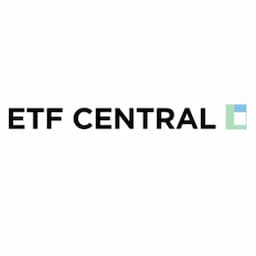On March 5, 2024, Bitcoin enthusiasts and investors witnessed a significant milestone as the cryptocurrency surged past its previous all-time high set in 2021, peaking at an impressive $69,200.
Although it experienced a sharp pullback within the day, trading later at $62,115, the digital currency's value has still seen a remarkable increase of nearly 46% year-to-date.
This surge comes at a time when the crypto community is eagerly anticipating the Bitcoin halving event scheduled for April, a mechanism that historically has contributed to bullish market sentiment and price increases.
Additionally, the continued inflow into spot Bitcoin Exchange-Traded Funds (ETFs) has played a pivotal role in providing investors with a more accessible avenue to gain exposure to Bitcoin, without the need for self-custody or navigating the sometimes-complex landscape of cryptocurrency exchanges.
Here's my analysis of the dynamics propelling the recent Bitcoin rally, and a highlight of some of the spot Bitcoin ETFs that have reaped significant benefits since their introduction to the market.
What's behind the Bitcoin bull run – the April halving
The upcoming April halving event is a significant catalyst behind the current Bitcoin bull run, drawing considerable attention and anticipation from the crypto community.
But to understand the impact of the halving, it's essential to break down the process of Bitcoin mining and what exactly halving entails.
Bitcoin mining is the process by which new bitcoins are introduced into circulation and transactions are verified and added to the public ledger, known as the blockchain.
Essentially, miners (like Bitfarms and Hut8) use powerful computers to solve complex mathematical puzzles, and the first to solve the puzzle gets to add a new block of transactions to the blockchain. In return for their efforts, miners are rewarded with Bitcoins.
Halving is an event that occurs roughly every four years (or every 210,000 blocks mined) and cuts the number of Bitcoins awarded to miners for adding a new block to the blockchain in half, hence the name. This mechanism is built into Bitcoin's code to control the supply of new bitcoins entering the market and to mimic the scarcity and inflation rate of precious metals like gold.
The last halving occurred in May 2020, when the block reward dropped from 12.5 to 6.25 bitcoins. Come April 2024, the reward will decrease further to 3.125 bitcoins.
This scarcity effect is a fundamental principle of Bitcoin's supply and demand economics. With each halving, fewer new bitcoins enter circulation, making the existing supply more valuable if demand continues to grow or remains steady. The process will continue until the total number of Bitcoins in circulation reaches the maximum cap of 21 million, which is estimated to happen around 2140.
The anticipation of reduced supply post-halving has historically led to bull runs, as investors and speculators buy into Bitcoin ahead of the event, hoping to capitalize on the potential price increases that follow. This dynamic is at play once again as the crypto community gears up for the April halving, with many looking to the past to gauge the possible impacts on Bitcoin's price trajectory.
What's behind the Bitcoin bull run – spot ETF inflows
The launch of spot Bitcoin ETFs on January 11 marked another pivotal moment fueling the ongoing Bitcoin bull run, with impacts expected to extend well into the future.
Unlike their predecessors, which primarily utilized futures contracts to gain exposure to Bitcoin's price movements, these new ETFs take a direct approach by actually holding Bitcoin in custody.
This shift is significant because of how these ETFs interact with investor inflows. According to the regulations set by the SEC, these spot Bitcoin ETFs operate on a cash-creation mechanism.
This means that when investors buy shares of these ETFs—beyond what's available from existing shares on the secondary market—the ETFs are required to use that cash to purchase more Bitcoin to back the new shares issued to meet this demand. Essentially, any inflow into these ETFs translates to direct purchasing of Bitcoin, increasing demand and, by extension, its price.
The ETF Central screener reveals a lineup of some 30 ETFs offering Bitcoin exposure. Among these, the top four in terms of one-month inflows are all spot ETFs: the iShares Bitcoin ETF (TSX:EBIT) (IBIT), the Fidelity Wise Bitcoin Trust (FBTC), the Ark 21Shares Bitcoin ETF (ARKB), and the Bitwise Bitcoin ETF (NYSE:BITB).
These ETFs have attracted $5.14 billion, $2.35 billion, $983 million, and $511 million in inflows, respectively. Such growth rates are particularly remarkable given the competitive landscape, highlighted by the entrance of 11 new spot Bitcoin ETFs into the market.
This content was originally published by our partners at ETF Central.
